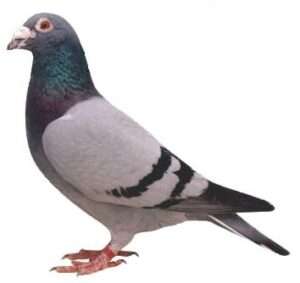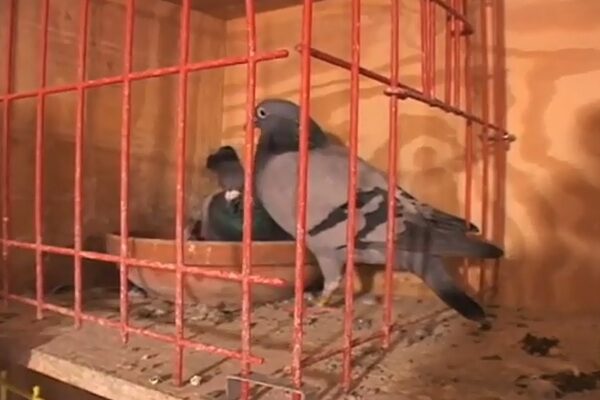Condition and Form In Racing Pigeons
 Form in General
Form in General
If you have ever studied power lifting training is designed to allow an athlete to peek his performance on the day or just shortly before the day of competition. This is what we try to accomplish with racing pigeons. Our goal is to ship our birds to a race when they are at their best to fly this race. In combination with form and condition we are also trying to send them with motivation within our racing systems to put them in the best psychological condition for the race. This chapter covers “Form”. How to identify it and how to create it and how to keep birds in form for the longest period of time.
How to recognize Form
Many fanciers have many definitions of what to look for in determining form. Read as much material as you can and soon you will get an idea of what form in your loft looks like. Here is my list of how to identify form.
Health
First and foremost, your racers need to be healthy. Look for signs of good health to include, bright and clear eyes, snow white wattles and their feet and feathers should be free of any fecal matter. The birds should have plenty of plume.
Fitness
Hold the birds upside down and clear the feathers from the keel. The skin should be rosy pink, like your lips. If the flesh is blue, the bird was over spent on the last race and is in no shape to fly again so soon. If the flesh is white or near yellow, the bird is most likely fat or no where near coming in form. These birds should be exercised and road trained. Do not send them to the race, they will be a waste of your money.
The bird should feel corky in your hand. A heavy bird needs lots of road training and is being fed way too much. It’s an easy calculation to know that every bit of extra weight will require energy to propel this pigeon through the air. Do no send fat pigeons. This is a waste of money.
Vitality
The bird should be lively in the loft and when flying. Lively does not mean excited and knocking about. Lively means it should carry itself with vitality. A bird that is listless or looks tire, probably still is tired or is not in shape.
Feather Quality “In the blood”
I do not send a bird when he has primary flights “in the blood”. When studying the moult you will notice that when a bird is growing a new flight feather there is a period where the quill grows out and is full of blood. In this stage an injury to the quill could be very bad for the bird. During this time, the health of the bird has a very direct impact on the quality of the new flight. I believe it is not good to ship birds when they are in this stage. There will be another chapter on moulting, but old birds are best raced before the fifth flight has been dropped. There are systems to control the moult.
Psychological State (Motivation — Confidence)
A bird should have the right psychological state. There are two elements to psychological state. First is the psychological state within the loft. My term for this is is motivation. If flying natural, the bird should have a mate. If the mate was lost the week prior and this bird has not re-mated, it is probably a waste of time to ship him/her. A bird should be shipped when he can fly his/her best race. If flying widowhood the routine used prior to shipping must be implemented. Birds need to have motivation to race to their full capabilities.
The second element of psychological state is confidence. A bird coming off a good week who is still in form can go back to the races. A bird who is a day or two late, must be retrained with remedial road training. It’s about giving them confidence so they can push on and fly their hardest. If they continually get beat into the ground with tough races and are not given time to recover, they will loose the will to race. A bird who has done well as a few short races, can jump to the long races. A bird who has not done well at the short should not be jumped into the long. Just as training is about building confidence, racing is about building confidence as well.
By: Andrew Domanski of Domanski Family Lofts
The Leading Online Pigeon Racing and Racing Pigeons Magazine – The Pigeon Insider









Hi Chris,
Great article on, “Condition and form” in racing pigeons. On the motivation side, I would usually send some of my cocks that are driving their hens. On sending my hens, they must be sitting on eggs that are 10 days old.